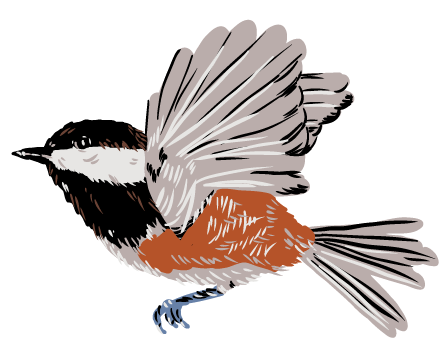The Resurrection
The Gulf fritillary, Dione vanillae
What’s cool about the gulf fritillary is how observing them helps me to learn more about observing monarchs. When you first spot a fritillary out of the corner of your eye - that flash of orange and black - you almost think it's a monarch. You catch your breath, pause, turn slowly, track your eyes back to confirm. Was that a monarch?! That rare charismatic megafauna? That endangered California beauty? Then, you realize how zippy it is. It practically flits. It somersaults and catapults enthusiastically with wing flaps per second that are impossible to count. Ooooh… you realize. Monarchs are way more chill. Gulf fritillary fo sho.
Up close the GF also has a really cool wing pattern. They have this silver, almost luminescent spot on their back. I’m curious if it’s an adaptation for mating? For recognizing each other with their cool buggy UV light sensitivity? Does that wing pattern look the same to them in UV as the passion flowers they love to lay their eggs on?
The white passionflower vine in our garden
We planted a few passion flower vines years ago, because I wanted something vigorous and unfussy to grow over our outdoor patio. And she really came through! Every year the passion vine makes it all the way across the arbor, a ceiling of green and entwined leaves that makes you feel like you’re sitting under an overgrown greenhouse roof.
What I didn’t realize (and what’s turned out to be a delight) is the gulf fritillaries that would come with the passion vine. It’s their host plant, and throughout the season the number of caterpillars these two vines support is truly insane. They will be crawling on the table, up the posts, on the roof slats - and then, when they get truly huge, they will attach themselves to everything. I’ve found chrysalis on the sides of chairs, inside the umbrella - I always get giddy when I see one. Did you know that if you poke a chrysalis it will react to your touch? Wild! It’s just a bag of goo! The caterpillar literally liquifies and then reforms its cellular structure into a butterfly. Truly insane. Nature is metal as hell.
Gulf fritillaries going HAM on the passionflower vine
A gulf fritillary forming a crysallis on our outdoor side table
Just emerged from his chysallis! Good job little guy!
Gulf fritillary season is definitely the summertime, when the passion vine is fully leafing out and climbing across the deck. So I was really surprised to see a fully formed butterfly on the floor of the deck in March, mostly because I hadn’t seen any all winter (caterpillars or butterflies). And I was equally surprised to notice that it appeared, for all intents and purposes, to be 100% dead. Fully intact, no harm or missing parts, but absolutely not moving, even when I touched it. There were even some ants moving in on it - so they clocked it as dead too, clearly.
Well, me being the delightful weirdo I am, saw that pristinely dead gulf fritillary and thought - aha! I will pin him! I will pin him up and he will dry beautifully and I can add him to my collection of dead butterflies. I was delighted to be able to use the skills I had learned in the Lepidoptera class I took years ago IRL. I scurried to my studio to find a board and some sewing pins (not exactly etymological grade but they’ll do in a pinch). I started laying out the specimen and arrayed the wings just so, then pinned at angles towards them (not through the wing! I remembered after accidentally messing up the first one). Then I recalled the key to insect pinning - you’ve gotta secure the thorax. Have I mentioned how wild it is that we think butterflies are beautiful, and that a lot of other bugs are gross? Literally if you remove their pretty patterned wings, their bodies are insanely creepy-crawly. Anyways, I jammed a big pin through the middle of that little guys body, re-arranged the wings just so, and left the whole thing in the corner of my work table to dry out.
Cut to a week later (mind you, I am in my studio a lot, and had been spending time at my work table consistently since pinning this friend). I had my back to the table, and was engrossed in a weaving project on the loom. But I kept hearing this…scratching noise. We used to have a mouse problem and I swear my first thought was “Oh no, there are mice in the walls again…” I tried to go back to my project, but the scuffling and scratching kept pulling me out of my concentration. Then, I turned around to investigate, and THE BUTTERFLIES WINGS WERE MOVING! Omg omg omg. I jumped up - pretty sure out loud went “Sorry sorry sorry sorry, you’re alive?!?!” and proceeded to unpin my now confirmed torture victim (seriously, that guy was pinned straight through the thorax - how the hell was he alive?!) I ran the poor little guy outside and put him in a pot under a shady plant, then went to get him a little dish of water. When I got back with the water he was gone - I’m not sure if he flew away or flopped away, my guess is he probably didn’t make it due to the extreme stress I had put him through.
So, in the end, I learned that even if a butterfly looks dead, and doesn’t respond when you poke at it, it might not actually be dead. And, said dead-appearing butterfly can literally stay dead-appearing for days and then resurrect himself. Oh, did I mention it was Easter?



















Code name: Barbie Dream Kitchen